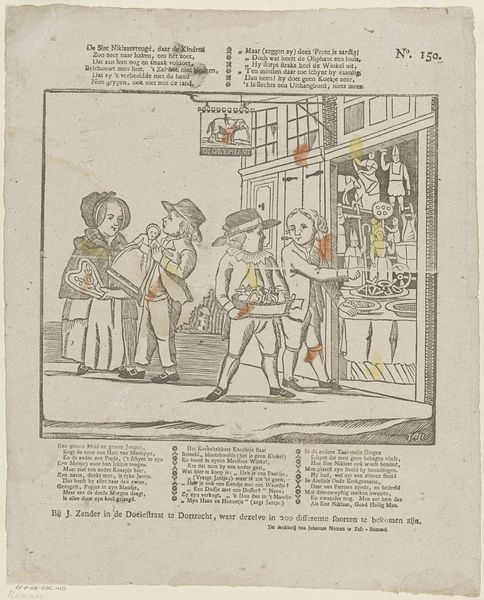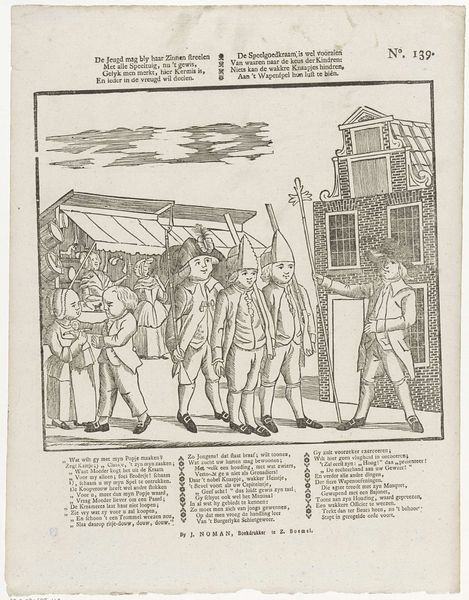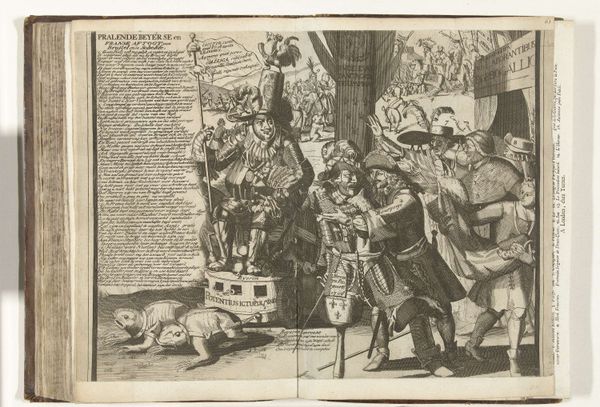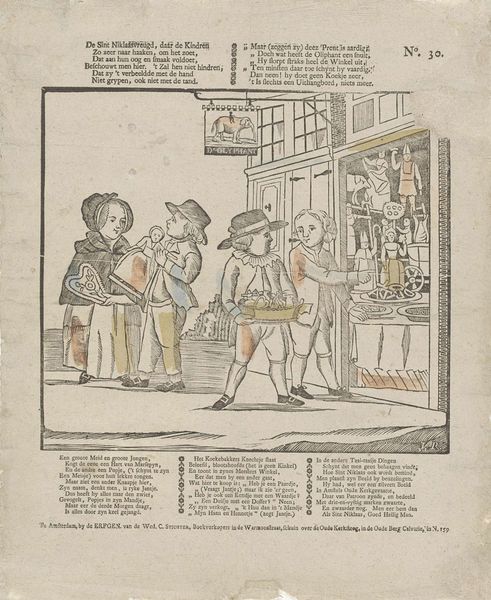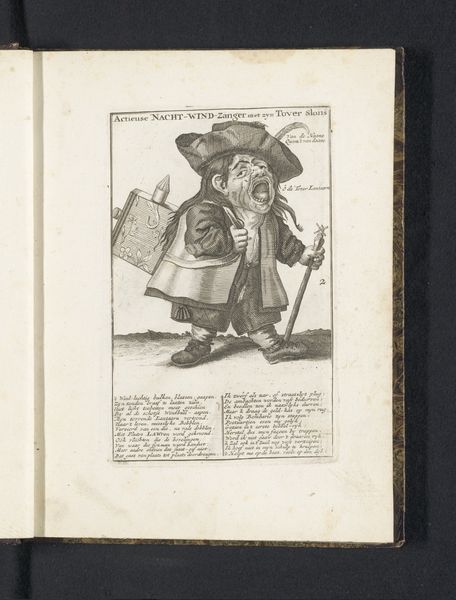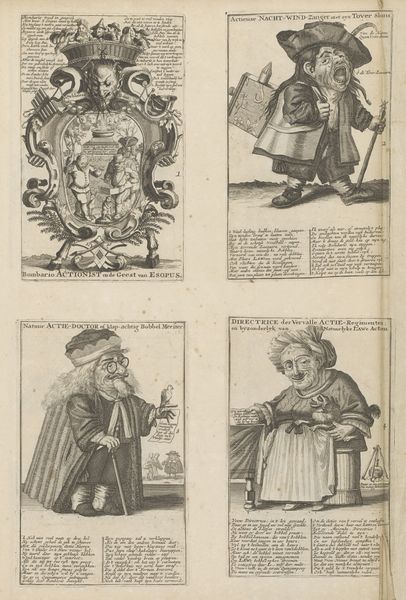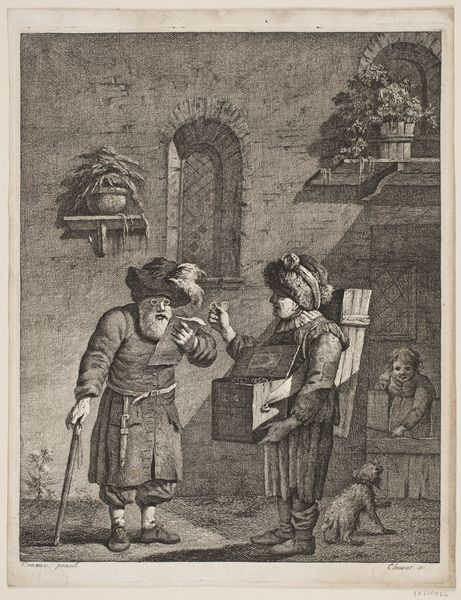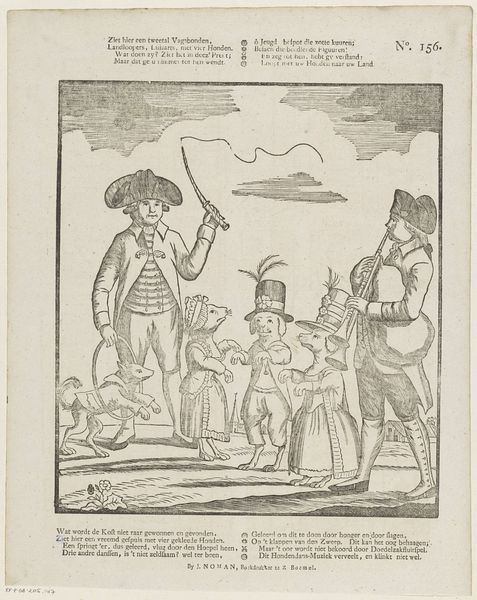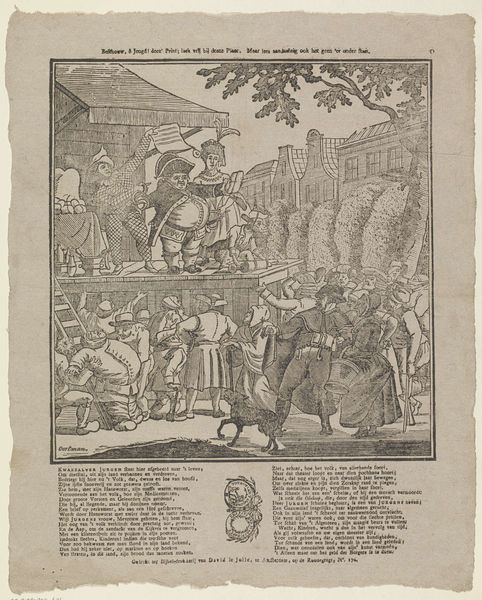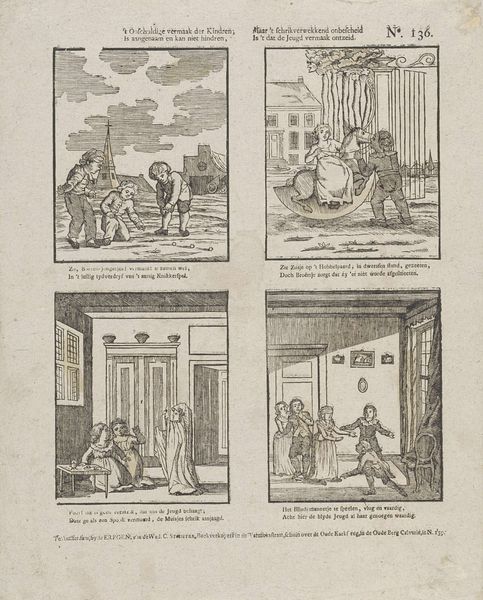
Indien, ô kindren! deeze snaaken, / uw oogen en uw geest vermaaken, / Beschouwt ze dan, terwyl gy spot / Met elken vastenavonds-zot 1715 - 1813
0:00
0:00
print, engraving
#
comic strip sketch
#
imaginative character sketch
# print
#
caricature
#
sketch book
#
cartoon sketch
#
figuration
#
personal sketchbook
#
idea generation sketch
#
sketchwork
#
sketchbook drawing
#
genre-painting
#
storyboard and sketchbook work
#
sketchbook art
#
engraving
Dimensions: height 414 mm, width 331 mm
Copyright: Rijks Museum: Open Domain
Curator: Let's delve into this print titled "Indien, ô kindren! deeze snaaken, / uw oogen en uw geest vermaaken, / Beschouwt ze dan, terwyl gy spot / Met elken vastenavonds-zot," attributed to J. Robyn, dating from between 1715 and 1813. Editor: My first impression is the starkness of the engraving. The linear quality gives it a crisp, almost theatrical feel, as if we’re witnessing a scene unfolding on a stage. There's an economy of line here that emphasizes form, which gives it immediacy. Curator: Absolutely, and consider that these kinds of prints circulated widely, functioning almost as political cartoons of their time. Looking at the costuming and implied narrative, one can consider this a satirical commentary on social behaviors. The verses beneath the characters drive that interpretation home. Editor: True, the caricature-like exaggerations serve a purpose. Observe the use of line weight—heavier lines define the figures, making them pop against the comparatively sparser background, a compositional method typical in prints from this period. Curator: And these prints weren’t viewed in isolation. They existed alongside societal shifts, moral debates, and evolving senses of identity. These exaggerated depictions might poke fun at shifting fashions or critique cultural values within a specific context. Think of the jester-like character. Editor: The figure’s diamond-patterned dress and gesture draw the eye, acting as a pivotal formal element that balances the overall design. And the mask she’s holding adds another layer – it implies artifice and theater, so to speak. Curator: Right, the mask brings performativity to mind, doesn't it? The narrative unfolds in connection to the social customs related to the time, adding yet another layer of complexity beyond formalistic approaches. It leaves one pondering ideas of how public figures play particular roles, especially around periods of masked revelry like Carnival, "Vastenavond". Editor: Yes, precisely! Even without fully understanding the Dutch verse, the exaggerated forms and stark contrasts speak to a kind of theatrical unveiling. The linear rhythms lead the viewer's eye, and that is the heart of the image’s structure and lasting impact. Curator: In this print, it's amazing how line, form, and cultural context work together, and allow this artwork from the Rijksmuseum collection to have significance in broader societal dynamics. Editor: Indeed. A brilliant confluence of formal ingenuity and social critique—quite memorable.
Comments
No comments
Be the first to comment and join the conversation on the ultimate creative platform.


